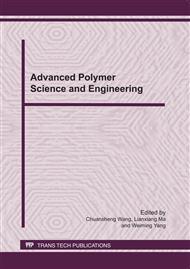p.295
p.302
p.308
p.316
p.321
p.326
p.333
p.338
p.343
Study on the Effect of Thermal Design of Plane Mould on the Mechanical Properties of Epoxy Sheet Molding Compounds
Abstract:
The heating style of the plane mould has great influence on the mechanical properties of E-SMC parts. In this paper, the temperature distribution of the plane mould (general heating style and thermal optimized heating style) and the mechanical properties and the cross section morphology of E-SMC samples were systematically studied. The results showed that there existed 30°C difference between the highest temperature point and the lowest temperature point in the general heating mould cavity, the difference of flexural strength between the samples cut from the centre and those cut from the corner was about 140MPa, otherwise, the fiber distribution of the fracture cross section was extremely uneven and the fibers were poorly adhered with epoxy resin. While, in the thermal optimized mould cavity, the surface temperature was much more even and the difference between the highest temperature point and the lowest temperature point was less than 10°C. And the flexural strength between the samples cut from the centre and those cut from the corner was close to be 320MPa. The fiber distribution of the fracture cross section was even and the fibers were well adhered with epoxy resin.
Info:
Periodical:
Pages:
321-325
Citation:
Online since:
March 2011
Authors:
Price:
Сopyright:
© 2011 Trans Tech Publications Ltd. All Rights Reserved
Share:
Citation:


